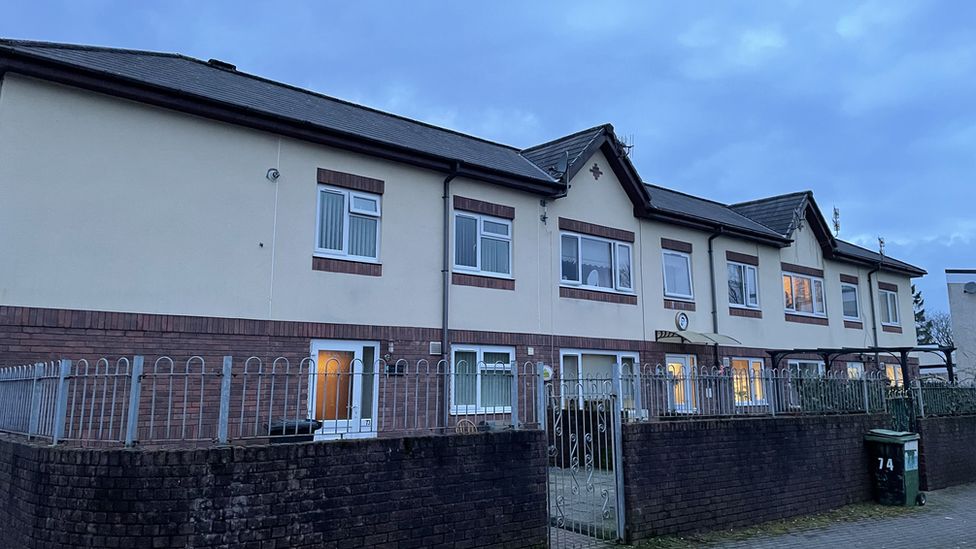
Residents are asked to leave their homes, but can choose to stay if they wish
By Iolo Cheung & Oliver Slow
BBC News
More than 40 households have been advised to evacuate after issues with reinforced autoclaved aerated concrete were found.
Housing association Trivallis said surveys found two properties at “critical risk” in Hirwaun in Rhondda Cynon Taff, but that 38 other properties have the same design.
Trivallis said it was finding temporary accommodation for those affected.
Raac is a lightweight material used in buildings between the 1950s and 1990s.
It is a cheaper alternative to standard concrete, and is quicker to produce, but it is aerated – or “bubbly”, like an Aero chocolate bar – and is less durable with a lifespan of about 30 years.
Forty Trivallis properties were affected, plus four privately-owned properties, the company said. It added that 24 families were affected, but that no tenants had been asked to move on Monday night.
It added that a survey of two properties highlighted “cracking in the Raac panels” and that it had advised people living in identical properties that they should move out.
Duncan Forbes, chief executive of Trivallis, said members of the housing association were knocking on doors informing residents about the situation.
He told Radio Wales Drive the company found out on Monday morning from structural surveyors that a number of properties that been surveyed were “critical risk”.
He added that surveyors said that “as long as you sort it in the next six months that will be OK”.
“We didn’t think that was sufficient – the words critical risk to us means there’s too much of a risk for us to take, and for us to take with tenants’ safety,” he said.
“That’s our primary concern, and we wanted to make sure tenants were aware, we started the process of moving them somewhere else as soon as possible.”
He said they would initially be put in hotels, or with family and friends, and that they would support families in getting children to school.
“We will keep on working with them daily, if they are still in their homes, and indeed beyond that, to make sure we have a permanent solution either for the work being done in the homes to make them safe, or that we rehouse them elsewhere wherever we can.”
He said they did not know how long it would take, however structural engineers would be in the properties within days.
“Until we know what the technical solution is we can’t predict how long it will take to implement, hopefully there will be a temporary solution that is quick and easy and that makes it safe and then we can get people back in their homes ,” he said.
‘Residents panicking’
Christine is one of the residents in Hirwaun who had survey work done on her house which identified problems with Raac.
“Everybody on the site is in shock – it’s scary because we don’t want to leave our homes,” she said.
“They’ve offered to put us up, but that would mean leaving our homes with all our stuff in it.”
Despite the safety warning from the housing association, she said nobody had moved out of their homes on Monday evening.
“We were all going to move tomorrow, but the ones around me have now decided to stay until we’ve got to go,” she said.
Christine, who had survey work done on her house, said many of the residents were in shock
Councillor Adam Owain Rogers said many residents were panicking, and did not fully understand.
“But what we’ve been informed by Trivallis is that they’ll be here through the week, giving as much information as they can to reassure residents that they’re working on the issue and identifying the problem,” he said.
He added that different properties were affected in different ways.
“But at the moment, there is uncertainty because of the time of day which people are being told, and people have informed us that they don’t want to move,” Mr Rogers said.
Trivallis describes itself as one of the largest housing association in Wales, providing more than 10,000 homes.
Last year, hundreds of schools in England, and dozens in Scotland, were found to have Raac, leading to many being partially closed.
Just a handful of schools were found to have Raac in Wales.








